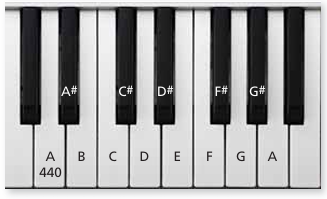EVALUATE THE NUMERICAL EXPRESSIONS
Subscribe to our ▶️ YouTube channel 🔴 for the latest videos, updates, and tips.
When two or more operations carried out, different answers can result depending on the order in which the operations are performed.
For example, consider the expression 16 - 10 ÷ 2
|
John decided to subtract first then divide. = 6 ÷ 2 = 3 |
Tina decided to divide first then subtract. = 16 - 5 = 11 |
Which answer is correct 3 or 11 ?
To avoid this confusion, we use the concept order of operations.
The word BEDMAS may help you to remember this order.
- Perform operations within Brackets first.(B)
- Then, calculate any part involving Exponents.(E)
- Then, starting from the left, perform all Divisions and Multiplications as you come to them. (D and M)
- Finally, working from the left, perform all Additions and Subtractions. (A and S)
Note :
If an expression contains more than one set of brackets, evaluate the innermost brackets first.
The division line of fractions behaves like a set of brackets. This means that the numerator and denominator must each be found before doing the division
Evaluate the following numerical expression.
Example 1 :
6 x 8 - 18 ÷ (2 + 4)
Solution :
|
= 6 x 8 - 18 ÷ (2 + 4) = 6 x 8 - 18 ÷ 6 = 6 x 8 - 3 = 48 - 3 = 45 |
Bracket Division Multiplication Subtraction |
So, the answer is 45.
Example 2 :
10÷5+20÷(4+1)
Solution :
|
= 10÷5+20÷(4+1) = 10÷5+20÷5 = 2+20÷5 = 2+4 = 6 |
Bracket Division Division Addition |
Example 3 :
5 + (2x10-5) - 6
Solution :
|
= 5 + (2x10-5) - 6 = 5 + (20-5) - 6 = 5+15 - 6 = 20 - 6 = 14 |
Bracket, Multiplication Subtraction Addition Subtraction |
Example 4 :
18 - (15÷3+4) + 1
Solution :
|
= 18 - (15÷3+4) + 1 = 18 - (5+4) + 1 = 18 - 9 + 1 = 9 +1 = 10 |
Bracket, Division Bracket, Addition Subtraction Addition |
Example 5 :
(2x3-4) + (33÷11+5)
Solution :
Since we have two set of terms inside the bracket, we will simplify that first.
= (2x3-4) + (33÷11+5)
= (6-4) + (3+5)
= 2 + 8
= 10
Example 6 :
(18÷3+3) ÷ (4x4-7)
Solution :
|
= (18÷3+3) ÷ (4x4-7) = (6+3) ÷ (16-7) = 9 ÷ 9 = 1 |
Division, Multiplication Addition, Subtraction Division |
Example 7 :
(50÷5+6) - (8x2-4)
Solution :
= (50÷5+6) - (8x2-4)
= (10+6) - (16-4)
= 16 - 12
= 4
Example 8 :
(10x3-20) + 3(9÷3+2)
Solution :
= (10x3-20) + 3(9÷3+2)
= (30-20) + 3(3+2)
= 10+3(5)
= 10+15
= 25
Example 9 :
(7-3x2) ÷ (8÷4-1)
Solution :
= (7-3x2) ÷ (8÷4-1)
= (7-6) ÷ (2-1)
= 1 ÷ 1
= 1
Example 10 :
(5 + 3) x 2+10 ÷ (8 - 3)
Solution :
= (5 + 3) x 2+10 ÷ (8 - 3)
= 8 x 2 + 10 ÷ 5
= 16 + 10 ÷ 5
= 16 + 2
= 18
Example 11 :
Carbon-14 dating is used by scientists to determine the age of a sample.
a. The amount C (in grams) of a 100-gram sample of carbon-14 remaining after t years is represented by the equation C = 100(0.99988)t. Use a calculator to find the amount of carbon-14 remaining after 4 years.
b. What percent of the carbon-14 remains after 4 years?
Solution :
a) C = 100(0.99988)t.
After 4 years, amount of carbon
C = 100(0.99988)4
= 100 (0.99952)
= 99.952
So, the amount of carbon-14 remaining after 4 years is 99.952
b) At the begining amount of carbon,
C = 100(0.99988)t
When t = 0
C = 100(0.99988)0
= 100(1)
= 100
At the begining, amount of carbon is 100 grams
After 4 years, 99.952 grams.
percent remaining = (99.952/100) x 100%
= 99.952%
Example 12 :
The frequency (in vibrations per second) of a note on a piano is represented by the equation F = 440(1.0595)n, where n is the number of notes above A-440. Each black or white key represents one note.
a. How many notes do you take to travel from A-440 to A?
b. What is the frequency of A?
c. Describe the relationship between the number of notes between A-440 and A and the frequency of the notes.

Solution :
a) From A-40 to A, we have to travel 12 notes.
b) F = 440(1.0595)n
To find the frequency, we have to apply n = 12
F = 440(1.0595)12
= 440(2)
= 880
c) At A-440, n = 0
F = 440(1.0595)0
= 440(1)
= 440
Frequency from A to A-440 is
= 880/440
= 2
Example 13 :
The expression 15a + 12c is the cost (in dollars) of admission at an amusement park for a adults and c children. Find the total cost for 5 adults and 10 children.
Solution :
Given expression is 15a + 12c
Here number of adults = 5 and number of children = 10
Applying these values, we get
= 15(5) + 12(10)
= 75 + 120
= 185
Example 14 :
The expression p − 15 is the amount you pay after using the coupon on a purchase of p dollars. How much do you pay for a purchase of $83?

Solution :
In the given expression, p - 15 (p represents the amount )
Here p = 83
Amount you pay after using the coupon is
= 83 - 15
= 68
So, the amount to pay is $68.
Subscribe to our ▶️ YouTube channel 🔴 for the latest videos, updates, and tips.
Recent Articles
-
Finding Range of Values Inequality Problems
May 21, 24 08:51 PM
Finding Range of Values Inequality Problems -
Solving Two Step Inequality Word Problems
May 21, 24 08:51 AM
Solving Two Step Inequality Word Problems -
Exponential Function Context and Data Modeling
May 20, 24 10:45 PM
Exponential Function Context and Data Modeling